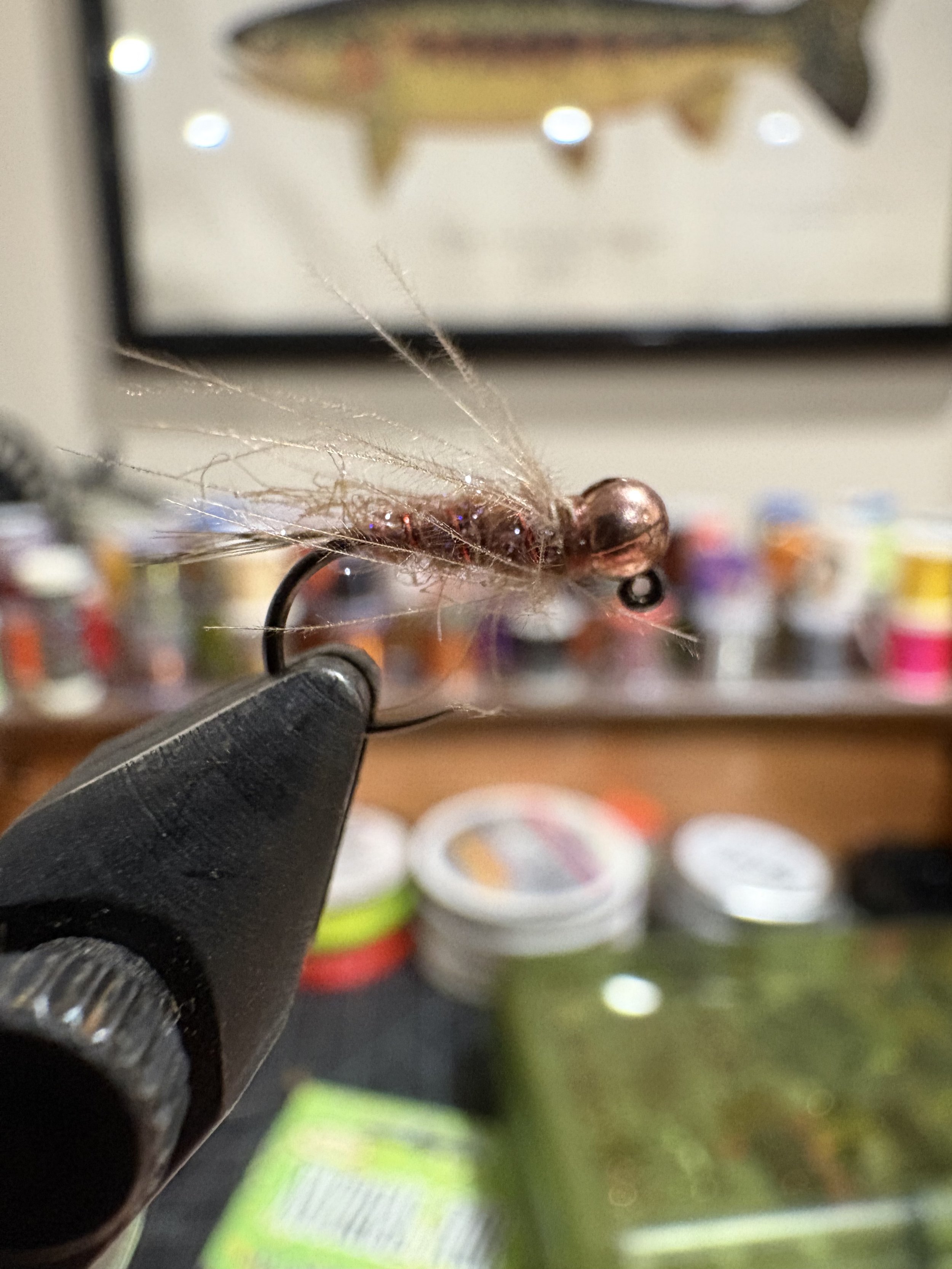A Pattern That Punches Above Its Weight
If you’ve been following along, you’ve probably noticed a theme in my fly boxes. Like last week’s Sexy Walt’s Worm, I lean hard into flies that serve as attractors—not dead-on imitations. Today’s pattern is no different.
The UV Brown Soft Hackle is my own riff on the classic Hare’s Ear Soft Hackle. It blends proven ingredients with a few modern tweaks, creating a deadly effective fly that’s fooled trout across the country. It fishes like a mayfly. It fishes like a caddis. And most importantly—it just fishes.
What Makes It Work
This fly checks every box that matters:
UV Brown dubbing gives it a subtle internal glow and buggy texture.
Hot orange wire ribbing provides a segmented look and just the right flash.
A soft brown CDC collar traps bubbles and adds delicate movement.
The beauty of soft hackles is in their ambiguity. Depending on how it rides, that CDC can look like trailing shuck, legs, or even wings. It's not an exact match for any one thing—but it suggests a lot, which is exactly the point.
Jig Hooks, Shallow Water & Profile Tweaks
Tied on a jig hook with an undersized bead, this fly isn’t just effective—it’s practical. It sinks quickly, avoids snags, and rides hook point up. That makes it perfect for running through fast, shallow riffles—especially those spots you’d normally write off.
Another underappreciated bonus? That inverted profile gives fish a different view than your standard nymph. In pressured waters, even a subtle variation in silhouette can make a difference. I’m not saying trout are geniuses—but they definitely notice what gets thrown at them a lot.
When to Fish It
This one shines as a dropper in a Euro rig or on a shallow dry-dropper setup. It’s light enough to stay up but heavy enough to tick the zone. It’s become one of my go-tos when nothing else is working—and when everything is.


















